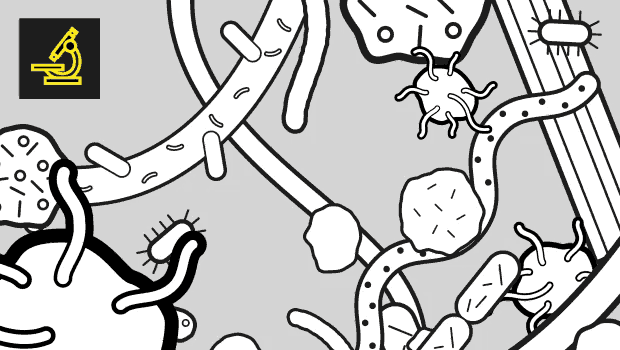What is dust actually made of? What exactly is the difference between cleaning and tidying up? And what’s the most effective way to clean your home? We take a closer look and uncover the secrets of a squeaky-clean apartment.

The dust has really piled on
It’s something we’re all too familiar with: The house is radiant after a recent cleaning, from the attic down to the basement. You keep the windows and the doors closed after airing out the rooms. Yet, just a short time later, a fine layer of dust settles on the furniture, on the plants and on the floor. Unfortunately, mopping, sweeping and vacuuming only provide temporary respite since dust will invariably be stirred up wherever people live. But where does dust come from anyway and what’s it made of?
Zooming in using an electron microscope provides us with some answers. Dust is a ‘diverse mix’ of particles with various sizes that collect and bind together. It’s all there, from dead skin cells and carpet fibres, to pollen and pet hair, to fine particulate matter — an ‘inviting feast’ for unwanted guests such as booklice, dust mites, bacteria and mould spores. Depending on the size of the particles and their weight, dust is either carried to every corner of the house with the circulating air or it permanently drifts through the rooms without settling.
The composition of house dust differs depending on the room, the location of the dwelling as well as the number of inhabitants and their way of living. We carry a large portion of this dirt into the house with us on our shoes. And that’s why grates, coconut or textile mats and rubber profiles serve as effective ‘dirt collecting zones’. When placed at entrances, they catch a good amount of the grime which would otherwise end up in the entry hall or in other living areas. Airing out a living space brings in additional soot, fungal spores and pollen.

Types of dirt
In very general terms, dirt can be divided into three types:
- Coarse dirt, such a paper remnants and autumn leaves
- Fine dirt, such as sand, dust and soil
- Fluid dirt, such as water, oil and solutions
Moreover, dirt can contain various contaminating characteristics:
- It is found loose on the ground, such as sand or dust
- It is fixed to a surface, such as adhesive residue, protein and fat
- It causes mechanical damage to a surface, such as sand and pebbles
- It contains micro-organisms, such as bacteria, viruses or fungus
Don’t only clean up but also maintain
Anyone tackling dirt and impurities cannot avoid the task of ‘cleaning up’. Cleaning is defined as ‘making something free of unwanted foreign substances which are situated on a surface’. Every cleaning process aims to get rid of dirt and impurities by using the most efficient cleaning method possible. In the household, this includes sweeping, vacuuming, scrubbing, and using a dry or a wet mop.
Just like dirt, cleanliness can be divided into various types:
- Visually clean — the naked eye does not see any more dirt on the surface
- Bacteriologically clean — a surface is free of living micro-organisms
- Physically clean — there is no dirt visible on a surface, even when using a magnifying glass or a microscope
- Chemically clean — a surface is free of oxygen compounds and chemical substances
And just why do we invest so much time and effort — an average of 3.17 hours per week in Germany, as evidenced by an international study on cleaning by Kärcher — into thoroughly cleaning our living spaces? We not only believe that a clean home is important, but we also aim at value preservation, meaning that we want to take care of our property. Other factors such as aesthetics, safety and image also move us to reaching for the vacuum cleaner, steam cleaner, electric broom and the like.

